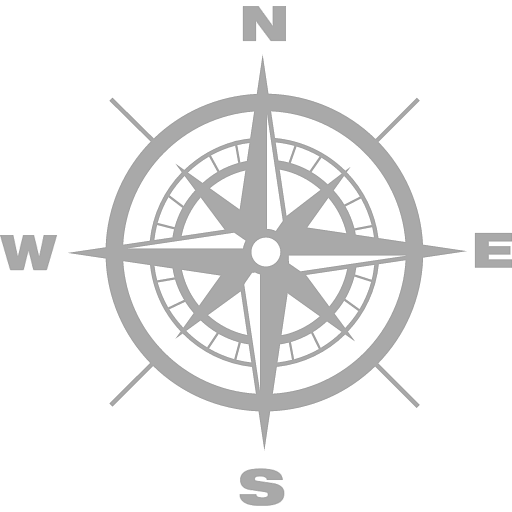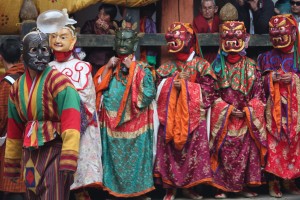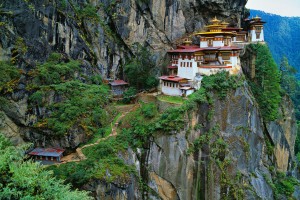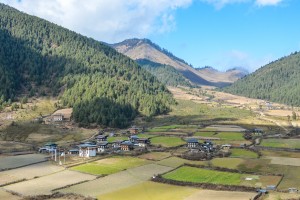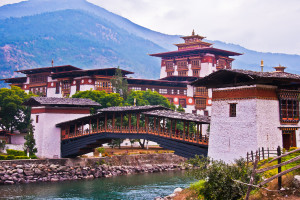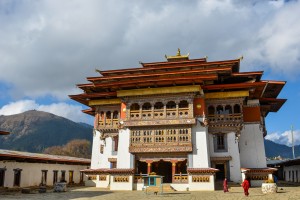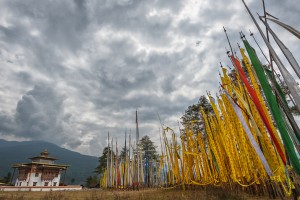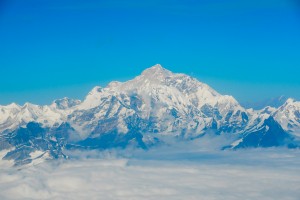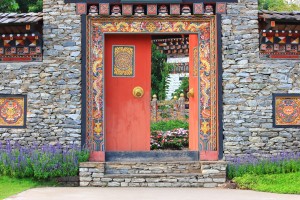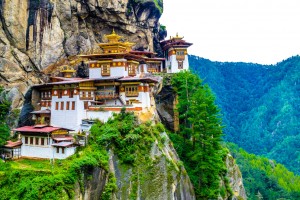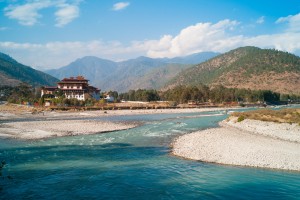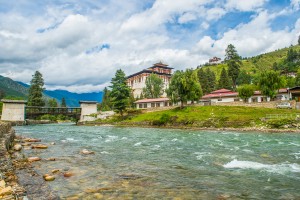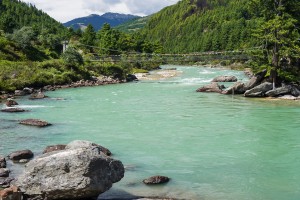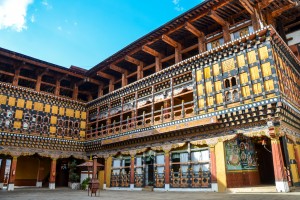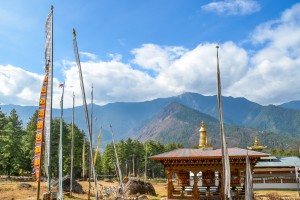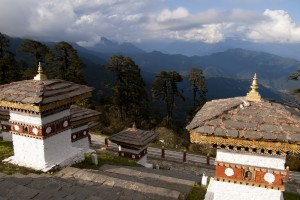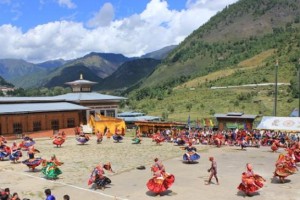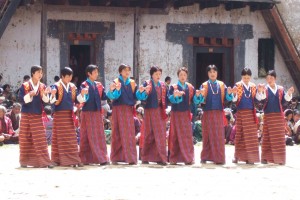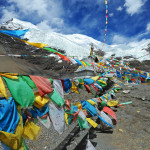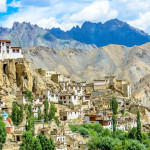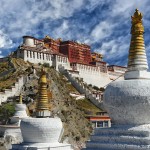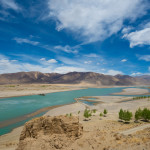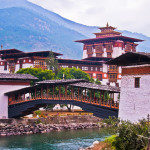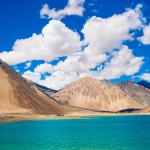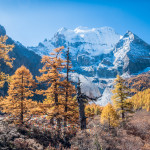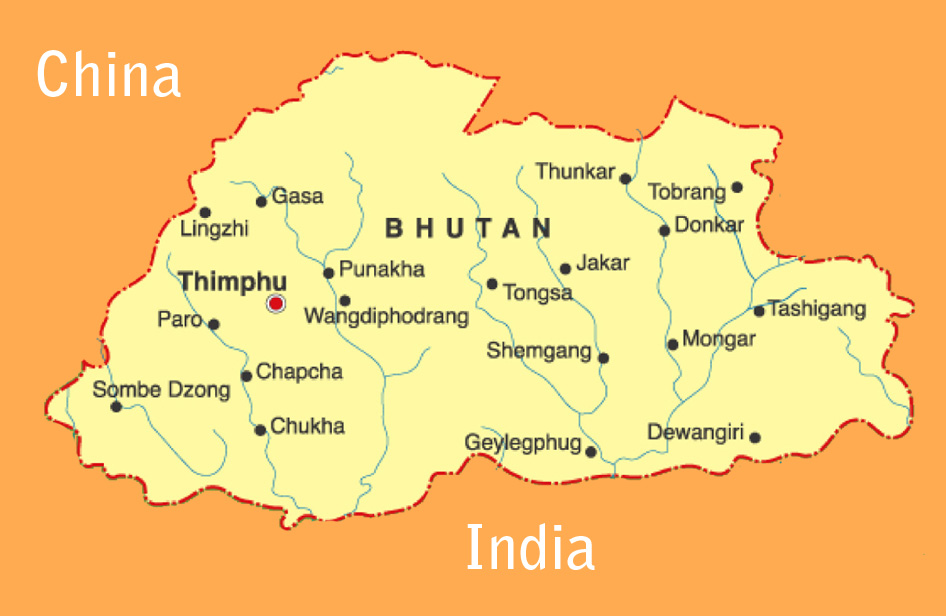
Western Bhutan Journey
Bhutan is a small land-locked country in the eastern region of the Himalaya. The "Land of the Thunder Dragon" is one of the planet's most fascinating countries and is one of the true Shangri La's! This 7 night, 8 day journey will take you all across Western Bhutan. You will start by flying to Paro, Bhutan's only international airport. The flight to Paro should give you some awesome views of the glacier-covered Himalaya Mountains. In Paro, you will explore the beautiful Paro Dzong as well as the famous monastery of Taktsang or Tiger's Nest.
From Paro, you will west to the nice valley of Haa. Along the way, you will cross over the Cheli La Mountain Pass, which at over 3800 meters high, can offer good mountain views in clear weather. You will then travel to the Bhutan capital town of Thimphu, one of the smallest capital cities in the world. In Thimphu, you will visit all the main sites including the Trashi Choe Dzong, the huge Statue of Buddha Sakyamuni and the National Memorial Chorten (stupa). Your next destination is the serene and stunning Gangtey Valley. This valley offers all kinds of hiking opportunities and in the months of November and December you can see the famous black-necked cranes. From Gangtey Valley, you will then return to Thimphu and fly out of Paro on the 8th day. For more information, please send an email to: info@himalayajourney.com
Day 1: Arrive to Paro, Bhutan Elevation: 2280 meters
Your first day will have you arriving at the international airport in Paro, Bhutan. You will spend the afternoon exploring the beautiful Paro Dzong as well as the Druk Choeding temple. Afterwards, you can spend some time walking the streets of the quaint town of Paro.
Day 2: Around Paro—Taktsang (Tiger's Nest) Monastery—Kyichu Lhakang
In the early morning, you will begin by making the pleasant 2 or 3 hour hike to the famous Taktsang or Tiger's Nest Monastery. Along the way, you will get excellent views of one of the most iconic monastery's in the Himalaya. Afterwards, you will wander around the ruins of the ancient Drukgyel Dzong, which was built in 1649. On the way back to Paro, you will then visit Kyichu Lhakang, one of Bhutan's oldest and most beautiful Buddhist temples.
Day 3: Paro—Haa Valley—Paro Distance: 70 kilometers Elevation: 2670m
After breakfast, you will begin your day trip to the Haa Valley. Along the way, you will cross over the Cheli La Pass, which is the highest road pass in Bhutan at over 3800 meters. If you are interested, there is a 1 1/2 to 2 hour hike above the pass which offers great views of Mt. Jomolhari when the weather is clear. The Haa Valley, elevation 2670 meters, is very beautiful and is filled with nice Bhutanese-style homes across the rural countryside. In the late afternoon, you will return to Paro.
Day 4: Paro—Thimphu Distance: 55 kilometers Elevation: 2320m
This day you will make the short drive from Paro the Thimphu, the capital of Bhutan. Despite being a world capital, you can easily walk from one end of town to the other in less than half an hour! This pleasant town has several key sites to explore. The first place you will go to is located far above the town of Thimphu. The huge statue of Buddha Sakyamuni sits on a mountainside overlooking Thimphu. Next, you will explore Trashi Choe Dzong (fortress), which lies along the banks of the Wang Chhu River. You will also go to the National Memorial Chorten (stupa), which was built to honor the 3rd king of Bhutan in 1974. Each day, local Bhutanese come here to pray, meditate and spin Buddhist prayer wheels.
Day 5: Thimphu—Punakha Distance: 76 kilometers Elevation: 1250m
This day, you will continue driving east to Punakha. Along the way, you will cross over the 3140 meter pass of Do Chu La. If the weather is clear, you will be rewarded with a stunning panoramic view of the snow-covered Himalayas. In 2005, 108 chortens (stupas) were built to commemorate Bhutanese soldiers who perished. From the Dochu La, you will descend to the relatively low elevation region of Punakha. You will visit the 15th century Chimi Lhakang as well as Punakha Dzong. The dzong in Punakha is regarded as the most beautiful in Bhutan.
Day 6: Punakha—Pele La Pass—Gangtey Valley Distance: 95kms Elevation: 2900m
From Punakha, you will set out for the Pele La Pass, elevation 3420 meters. If the weather cooperates, you can see Mt. Jomolhari rising to 7314 meters in the distance. From the Pele La, you will continue on to the stunning valley of Gangtey (also known as Pobjikha). Before descending to the valley, you will cross over another pass, the Lowa La, where there are usually a small number of yaks herding. Gangtey is one of the most beautiful valleys in Bhutan. The valley is home to less than 5000 people and has plenty of fun hiking trails to take.
Day 7: Gangtey Valley—Thimphu Distance: 171 kms Elevation: 2320m
Your last full day in Bhutan will take you back to the capital town of Thimphu. You will arrive with plenty of time to wander the streets of this unique town one last time to pick up any last minute souvenirs.
Day 8: Thimphu—Paro International Airport
In the morning, you will return to Paro to catch your international flight leaving Bhutan.
Western Bhutan Journey
The Bhutan government tourism council has 2 different rates for travelers. One is a low season rate and the other the high season rate. Prices for journeys in Bhutan are higher in the high season and lower in low season, which is why Himalaya Journey offers 2 prices for all Bhutan tours. In Bhutan, the high season months are March, April and May and then again in September, October and November. The low season months are June, July and August and again in December, January and February.
The high season months are generally dry and offer better views of the mountains. The low season months of June, July and August can bring heavy monsoon rains. The low season months of December, January and February are generally clear and dry, but can be a little cold in higher elevation areas. With a warm jacket, the winter months can be an excellent time to visit Bhutan.
For costs or to book this journey, send an email to: info@himalayajourney.com
Included in the price:
- All accommodations (based on double occupancy)
- All meals
- All ground transportation in Bhutan
- All entrance fees for the itinerary listed
- Bhutan Visa
- Bhutan Tourism Development Fee
- Local Bhutan guide fees
- Paro Airport pick up and drop off
Not included in the price:
- Passport fees
- International airfare to/from Paro, Bhutan
- Travel vaccinations
- Insurance (travel, medical, etc)
- Souvenirs or personal items such as laundry, snacks, alcohol or soft drinks, etc
- Photography fees inside temples and monasteries
- Gratuities to the Bhutanese guide and driver
Travel Gear: Upon joining, each participant will be sent a list of required and recommended gear for this journey that they will be responsible for.
Accommodations: Accommodations in Western Bhutan are quite comfortable and clean, but are quite basic compared to international standards. Most hotels along this itinerary are locally rated as 3 Stars and offer private bathrooms, hot water for showering, clean bedding and electricity. Central heating is not available in most hotels, however in autumn and winter months electric heaters are provided.
Meals: All meals are included in the price of this journey. Most meals are buffet-style serving Bhutanese and Indian dishes. Please let us know if you have any special dietary restrictions.
Eligibility: Participants must be in good health and be able to spend each day walking around towns, villages and monasteries. Though you will be doing a lot of walking each day, no trekking is required. Most of this tour will take place in mountainous terrain between 1200 meters and 3800 meters (3900 feet to 12,500 feet) above sea level.
Responsible Tourism: Himalaya Journey is foreign-owned, but staffed with local Bhutanese in Bhutan. All of our guides and drivers are local Bhutanese who have been working in tourism for many years. The preservation of the culture of Bhutan, as well as the protection of the environment of the Himalaya, are extremely important to us. In fact, when we are not out leading and arranging journeys across Bhutan and other areas of the Himalaya, we are working with local Himalayan people in numerous eco-tourism and conservation projects.

